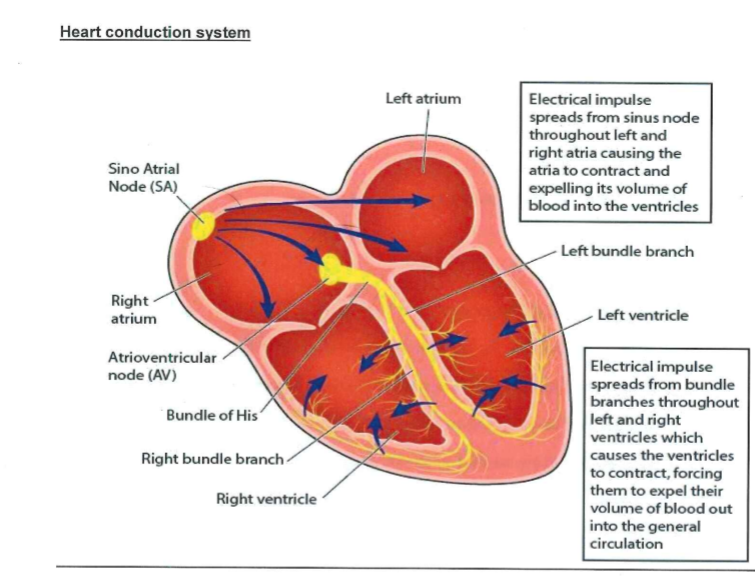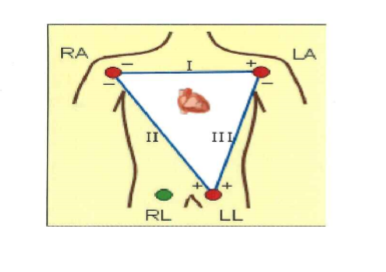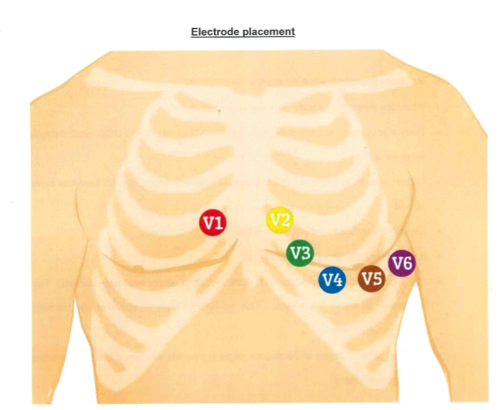
Impulses start at the sinoatrial (SA) node, travel through the atria, causing them to contract (squeeze). Next the signal travels to the atrioventricular (AV) node, through the bundle of His, down the bundle branches and through the Purkinje fibres, causing the ventricles to contract.




